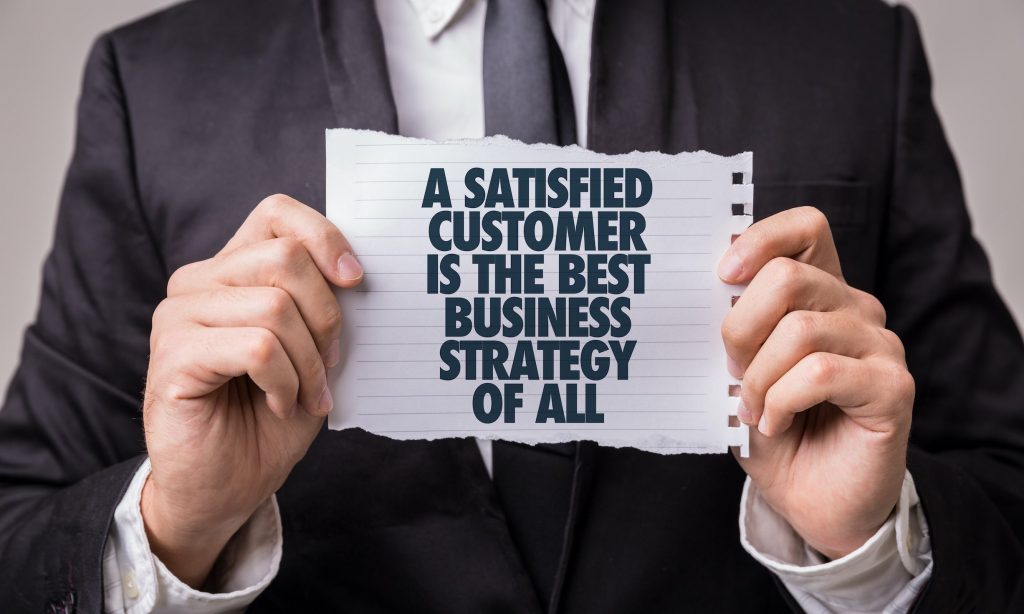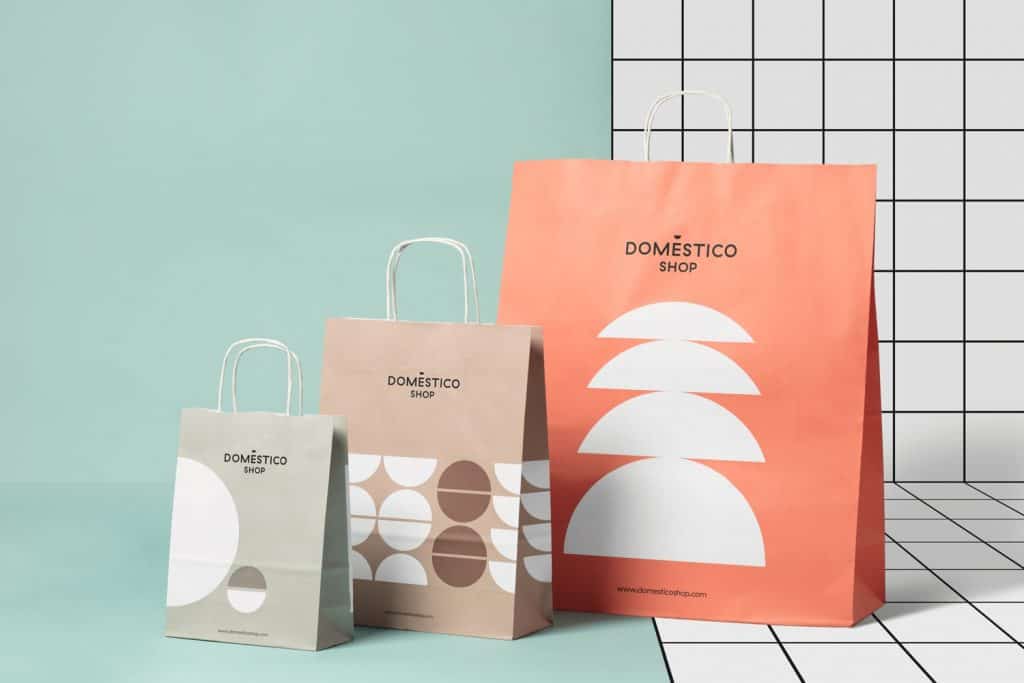Ultimate Guide to The 7Ps of Marketing
In the ever-evolving marketing world, the seven Ps paradigm has remained essential. Stemming from its predecessor of the four Ps, this marketing concept is the key to unlocking the full potential of any business venture. The 1960s may have been decades ago, but the influence of this framework is still evident today. As the smoke from cigarettes of men sitting at desks and the sound of ladies typing away in pools of secretaries has long since dissipated, the worth of the seven Ps remains unequivocally timeless.
The seven Ps of marketing garners every aspect of your marketing mix, from product development to pricing strategies, building a marketing plan to promote your brand, and choosing appropriate distribution channels. It is crucial to note that the seven Ps go beyond the tangible details of your product, however, and emphasise the importance of the people involved in delivering your service or product. This includes your internal employees, outsourced suppliers, and customer service representatives. In addition, a successful marketing strategy should cater to present consumers and attract future ones.
The seven Ps of marketing consist of product, price, promotion, place, people, process, and physical evidence. Product pertains to the actual sold element and its unique features. Price, the second P, involves setting a reasonable cost for your product that is not overpriced but adequately values your workmanship. The third P, promotion, refers to the marketing tactics deployed by your brand to create awareness and sales. Place, the fourth P, acts as a distribution channel for where and how your product is marketed, sold, and made available to consumers.
People in the fifth P imply the human element of the marketing mix, such as the employees and customers contributing to the brand's success. The sixth P, process, deal with streamlining every aspect of the business to deliver a product, ensuring the company runs smoothly. Lastly, the seventh P, physical evidence, is all about the tangible supporting factors accompanying the product, such as infrastructure and other enhancements.
Incorporating these seven vital elements into your marketing mix can help retain existing customers, develop new leads, and enhance short- and long-term success. A wise marketer understands that every message, every image, and every detail of a product must match the consumer's experience and impression. The seven Ps of marketing plays an integral role in creating brand recognition, customer satisfaction, brand loyalty, and revenue growth.
Table of Contents
1 – Product

When creating an outstanding marketing campaign, it's imperative to have a product that speaks volumes. Product is the anchor that keeps everything else in line in every aspect of your marketing mix. But, more than having a product alone is needed; it should solve a problem or answer consumers' needs. Your product must appeal to the right audience and solve a problem they're looking to address, forming the basis of your product strategy.
Product strategy also entails marketing efforts to support the product, such as the tactics used to create customer awareness and encourage sales. A successful product strategy ensures the marketing mix aligns with the product's solutions and target audience. But how do you know what messages to communicate about your product? What language should you use? What should you highlight?
This is where SEO, blogs or articles, paid advertising, influencer marketing, and viral video campaigns come into play. Digital marketing offers infinite options to showcase and emphasise your product's unique and compelling features. SEO, for instance, can help improve your website's visibility on search engines, enabling potential consumers to locate your product quickly. Blogging or article writing can help establish your product as an expert in its niche, while paid advertising can attract a broader audience that may have never heard of your product.
You can use influencer marketing to leverage the followers of an influential figure in your industry to advertise your product or viral video campaigns to evoke emotions and build brand awareness through compelling and entertaining short videos.
2 – Price

Pricing your product correctly is one of the most critical components of your marketing mix. It ensures your product is priced appropriately to secure a market position while maximising profitability. But how do you know what price point is fair for you and your target market?
One approach is to consider what your consumers are willing to pay. Investigating how much they're ready to spend aids in developing a pricing strategy that balances consumer demand and profit margins. Nevertheless, the pricing strategy should also consider the manufacturing and retail costs.
Other factors to consider when establishing your product's price point include your competitors and the demand for your product in the current market. If a lower price makes your product more competitive, it may be necessary to lower your cost modestly.
On the other hand, if your product offers features unique to its audience such that there's little comparison to alternative goods, bumping up the price point can help establish it as a premium product. You can also assess the market and determine how much consumers pay for similar products to help identify a market range on which to base your product price.
After deciding on the pricing, it's essential to embed it into your marketing mix. One way to do this is by incorporating subscription and membership discounting programs. You can also use email marketing to promote your product promotions and sales, especially to customers who've purchased from you in the past. Offering exclusive or limited-time discounts to members and subscribers can contribute significantly to developing loyalty to your brand.
3 – Promotion

Crafting an impeccable marketing strategy involves designing a comprehensive promotional mix that delivers your brand's message across all marketing channels. The promotional mix comprises various promotional activities across the marketing mix – advertising, direct marketing, personal selling, sales promotion, and public relations.
Advertising is the cornerstone of any marketing strategy, using various channels like TV, newspaper, billboards, and online ads. Direct marketing remains a powerful tool that's targeted at potential consumers via multiple channels like email, SMS, and direct mail. In-store promotional activities also play a significant role in ensuring that customers' buying experiences are pleasant and that they are continually engaged with your brand through in-store displays, loyalty programs, and free samples.
However, due to the increasing dominance of digital marketing, the digital promotion has taken the lead, with promotional activities only limited by imagination. By leveraging digital media channels like websites, social media, and mobile applications, businesses have a wider reach, broader audience targeting, and unprecedented levels of interactivity with their customers.
One significant advantage of digital promotion is its cost-effectiveness compared to traditional advertising, enabling companies, even those on tight budgets, to tap into its limitless potential. Social media groups can unite like-minded individuals to discuss and share information, creating healthy communities around your brand. Livestreams, online events, and chats are immersive and interactive ways of bringing your customers closer to your brand, interacting with them and responding to their queries in real time.
4 – Place

Determining where and how your product should be displayed and sold is crucial, as it directly impacts your sales and brand image. One way to ensure that your product is in the right place, offering the correct value, is by deeply understanding your customers and their purchasing patterns.
When you understand your customers' needs, interests, and behaviours, you can tailor your marketing strategy to encourage them to purchase at the proper buying cycle stage. You can achieve this through customer segmentation, data analysis and communication channels, such as social media, email marketing or surveys.
With a robust understanding of customers' needs, businesses can determine the appropriate channels to promote their products, like social media or broadcast media. If your products are more likely to be sought after by younger customers, digital marketing channels like Instagram or TikTok would be a good fit. On the contrary, if you're selling a product with a more restricted target audience, like healthcare products or medical equipment, consider advertising on technological platforms geared toward healthcare professionals.
Further, targeting customers at the right stage of their purchase cycle is just as vital. For instance, shoppers just browsing may be more receptive to display ads than newsletters or email promotions that market a particular product. Intermittently, a remarkable packaging design, product display, or retail location can make all the difference in their purchasing decisions. A good example is within retail stores, where products are displayed attractively and in prominent places to capture customers' attention.
5 – People

In today's digital age, nothing shapes a brand's reputation more than the customer service provided. Outstanding customer service not only leads to a higher potential for sales, but customer referrals can also extend your brand's reach and amplify its impact. These referrals often come from customers who love your brand, which is a testament to your service.
Acquiring referrals is crucial in today's competitive market, and that's where your marketing efforts come into play. By creating a memorable experience for your customers, you can enhance customer loyalty and, in turn, augment customer referrals. This will bring in new customers with a positive impression of your brand.
To ensure that the customer experience is seamless and consistent, every one representing your brand, including non-human chatbots, must be fully trained sales professionals with an intimate knowledge of your product. They should also understand how your product will solve the pain points or improve customers' lives. Whether your customers interact with your brand through a face-to-face conversation, a phone call, an email, or a chatbot, they should receive the same level of attention, expertise, and empathy that aligns with your brand values.
The power of referrals comes from the fact that it's a testament to the customer's experience with your brand and how it has positively impacted their lives. Referrals often result in a smaller investment by your brand to acquiring new customers, such as advertising and promotion expenditures. For example, when a satisfied customer refers your brand to a friend, you get brand recognition, traffic to your website, and, ultimately, a new customer. The value of a referral from a happy customer goes beyond that of any other marketing channel.
6 – Process

Translating your brand's values into every aspect of the customer journey is critical to creating a seamless experience that fosters brand loyalty. The delivery of your product to the consumer is a crucial component of this journey. It must be designed with maximum efficiency and reliability while aligning with your brand's values.
One way to achieve this is by incorporating environmentally and sustainably focused features into your delivery process. This could include eco-friendly packaging and shipping materials, using renewable energy to power your warehouses and distribution centres, and partnering with eco-conscious logistics companies.
In today's eCommerce landscape, online shopping has become a dominant force, and digital partnerships and logistics are essential to the success of any brand. This means that businesses must adapt their delivery practices to meet the demands of online shoppers, who expect fast and reliable shipping and sustainable options that align with their values.
Moreover, the speed and efficiency of delivery can directly impact the customer's perception of your brand. A delayed or damaged shipment can lead to negative reviews, a loss of trust, and, ultimately, a decline in sales. Therefore, investing in the logistics infrastructure is essential to ensure prompt and secure delivery to the customer.
Creating a sustainable delivery process will enhance the customer experience and contribute to your brand's corporate social responsibility (CSR) efforts. Consumers are becoming more conscious of their environmental impact, and by offering sustainable options, brands can demonstrate their commitment to sustainability and transparency in their operations. This kind of social responsibility can also lead to positive press and increased recognition of your brand.
7 – Physical Evidence

At the core of every brand lies physical evidence proving the brand's existence and that a purchase has occurred. These factors can take various forms, including a physical store or office space, a business website, or even printed business cards exchanged during networking.
However, the physical evidence alone cannot anchor your brand in a potential customer's mind. Your marketing mix must be thoughtfully designed to ensure your customer sees, hears, and smells your brand in every interaction with your product or service. Every aspect of your brand, from packaging and branding to product placement, influences the customer perception of your brand and should be optimised for maximum impact.
Packaging is a product protection mode and is a crucial aspect of brand communication. With sustainability at the forefront of consumer preferences, brands must use eco-friendly materials and eye-catching packaging designs that convey their values.
The product display is equally essential for enhancing the customer experience. The product placement should be optimised to improve visibility, allowing the customer to connect intimately with the product. Additionally, the context in which products are displayed should be carefully curated to mirror the brand's values and create a connection with the customer.
Regarding digital placement, brands must ensure that their online presence is consistent with their brand's values. The website must be easy to navigate and optimised for speed to provide the customer's seamless browsing experience. Moreover, it would be best to optimise the social media channels where your brand is active to build a community that can engage with your brand.
How to Use the 7Ps of Marketing in your Mix
The 7Ps of Marketing offer a holistic framework for businesses to create a successful marketing mix that will drive engagement and revenue. These 7Ps include product, price, place, promotion, people, process, and physical evidence. When applied correctly, it can create a seamless and coherent brand experience that aligns with its values and resonates with customers.
The first P, product, is the defining aspect of the marketing mix, as it is the product or service that will define your brand. Ensuring that your product is high-quality, unique and satisfies the customer's needs is the foundation of every marketing strategy.
Price is the element that affects customer behaviour, and finding the right pricing strategy that optimises profit while remaining competitive is essential. Additionally, transparency in pricing can help establish trust between the brand and the customer.
The third P, place, encompasses the channels through which customers can purchase the product or service, and a thoughtful distribution strategy that ensures accessibility can boost revenue.
Promotion is the aspect of marketing that creates brand awareness, stimulates demand, and impacts the customer perception of the brand. A well-crafted promotion strategy must consistently align with the brand's values to drive engagement and enable a memorable brand experience.
People, the fourth P, deals with the employees of a brand and their role in crafting a positive customer experience. The brand's employees must be knowledgeable, friendly, and aligned with the brand's values, creating an emotional connection with the customer.
Process refers to the internal operations and procedures of the brand and its ability to create a consistent and positive customer experience. A streamlined internal process can boost productivity, which ultimately increases customer satisfaction.
Physical evidence refers to the tangible aspects of the brand that customers interact with, such as packaging, product display, and even brick-and-mortar stores. A cohesive physical evidence strategy that aligns with the brand's values can strengthen the customer's perception of the brand.
In conclusion, applying the 7Ps of Marketing to every aspect of the marketing mix can create a comprehensive and effective marketing strategy that resonates with customers and aligns with a brand's values. As products, markets, and customer expectations change, regularly revisiting and optimising the marketing mix can give businesses the best chance to succeed in an increasingly competitive marketplace.
